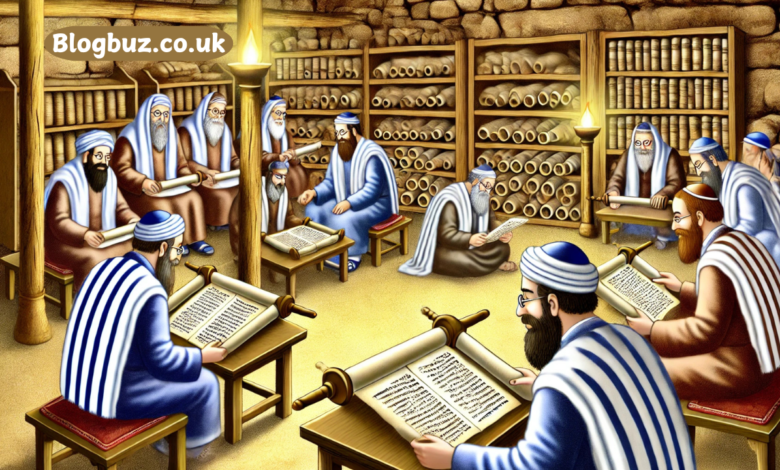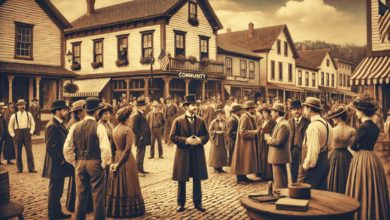Rambam List of Tanaaim: An Insight into the Pioneers of Jewish Law

The Tanaaim, a group of revered Jewish sages, formed Jewish law and tradition. Their teachings laid the groundwork for the Mishnah, a foundational text of Jewish oral law. Renowned Jewish philosopher and scholar Maimonides, the Rambam, compiled detailed insights about these Tanaaim in his work “Peirush Mishnayot.” In this article, we will delve into Rambam list of Tanaaim, exploring their contributions and lasting impact on Jewish tradition.
Who Were the Tanaaim?
The Tanaaim were rabbinic scholars who lived from approximately 10 to 220 CE. They played a critical role in developing Jewish law and ensuring its transmission through generations. The Tanaaim’s teachings are recorded in the Mishnah, a collection of oral laws codified by Rabbi Yehuda HaNasi. The era of the Tannaim ended with the final compilation of the Mishnah, marking a new phase in Jewish legal history.
Rambam’s “Peirush Mishnayot” and Its Significance
Maimonides, or Rambam, was one of the most influential Jewish philosophers of the medieval period. His “Peirush Mishnayot” (Commentary on the Mishnah) is an extensive work that interprets the Mishnah and provides insights into the lives of the Tanaaim who shaped it. Rambam’s commentary highlights each sage’s unique contributions to Jewish thought, helping readers understand the context in which these laws were developed.
Notable Tanaaim in Rambam’s Commentary
Rabbi Akiva
- Overview: Rabbi Akiva is perhaps one of the most famous Tanaaim. Known for his humility and dedication to Torah study, he began his scholarly pursuits later in life and became a revered figure in Jewish learning.
- Contributions: Rabbi Akiva’s interpretive methods and unique insights revolutionized Jewish exegesis. His system of interpretation, which involved deriving laws from the text of the Torah, influenced generations of scholars.
- Legacy: Rabbi Akiva’s life and teachings, particularly his emphasis on the importance of love and unity within the Jewish community, left an enduring mark on Jewish tradition.
Rabban Yohanan ben Zakkai
- Overview: Rabban Yohanan ben Zakkai was a pivotal figure during the destruction of the Second Temple. His foresight helped preserve Jewish teachings amid significant turmoil.
- Contributions: After the Temple’s destruction, he established an academy in Yavneh to continue studying and practicing Jewish law. His decision ensured that the teachings of the Tanaaim would endure even without the Temple as a central institution.
- Legacy: His establishment of Yavneh laid the foundation for future rabbinic scholarship and contributed to the survival of Jewish tradition.
Rabbi Yehuda HaNasi
- Overview: Rabbi Yehuda HaNasi, often called “Judah the Prince,” was the compiler of the Mishnah. His efforts to organize and codify Jewish oral law helped preserve these teachings for future generations.
- Contributions: Recognizing the need to maintain oral traditions, Rabbi Yehuda meticulously recorded the Mishnah, creating a structured and accessible document for study.
- Legacy: Rabbi Yehuda’s compilation of the Mishnah solidified his role as one of the most influential figures in Jewish history. His work remains a cornerstone of Jewish study.
Rabbi Shimon bar Yochai
- Overview: Known for his profound spirituality, Rabbi Shimon bar Yochai is often associated with mystical teachings.
- Contributions: His teachings in the Mishnah are concise but impactful, covering various areas of Jewish law and ethics. Additionally, he is traditionally credited with the authorship of the Zohar, a foundational text of Jewish mysticism.
- Legacy: Rabbi Shimon’s contributions extend beyond Jewish law into the realm of Jewish mysticism, and his impact is still felt in spiritual practices today.
Rabbi Eliezer ben Hyrcanus
- Overview: A highly respected teacher, Rabbi Eliezer was known for his strict adherence to tradition and reluctance to accept legal innovation.
- Contributions: His teachings, recorded in the Mishnah, reflect a deep commitment to preserving the Torah’s authenticity. His debates with other sages highlight the diversity of thought within the Tanaaim.
- Legacy: Rabbi Eliezer’s commitment to tradition serves as a reminder of the value of preserving ancient wisdom in a rapidly changing world.
Lesser-Known but Important Tanaaim
- Rabbi Meir
- Known for his sharp intellect and innovative interpretations, Rabbi Meir contributed significantly to developing Jewish legal discourse.
- Rabbi Yose ben Halafta
- As a key figure in the Mishnah, Rabbi Yose’s teachings span various topics, from ethics to civil law.
- Rabbi Tarfon
- Rabbi Tarfon’s teachings emphasized charity, kindness, and the importance of Torah study.
The Methodology of the Tanaaim in Jewish Law
The Tanaaim approached Jewish law with a rigorous and systematic methodology. Rambam’s commentary often elaborates on these sages’ interpretive methods, such as midrashic (interpretive) techniques that sought to derive practical laws from scriptural texts. Their methodologies included:
- Kal Vachomer: An argument from minor to major used to extrapolate broader principles from specific cases.
- Gezeirah Shavah: Comparisons between similar phrases in different contexts to derive new insights.
- Binyan Av: A principle derived from one or more Biblical texts to serve as a basis for other laws.
How Rambam Organized His List of Tanaaim
In his “Peirush Mishnayot,” Rambam often groups the Tanaaim by their ideological leanings, influence, and contributions to various areas of law. He provides readers with biographical details and interpretive notes, helping scholars understand each Tanna’s approach to legal questions. This organization reflects Rambam’s understanding of the Mishnah as a comprehensive legal system, with each Tanna’s contributions forming an integral part of the whole.
The Lasting Legacy of the Tanaaim
The teachings of the Tanaaim, preserved through the Mishnah and elaborated upon by the Rambam, continue to shape Jewish law and ethics. Their dedication to maintaining the integrity of Jewish tradition set a precedent for future rabbinic scholarship, and their debates provide a model of intellectual engagement that values diversity and unity. The legacy of the Tanaaim is evident in nearly every aspect of Jewish study, from daily practice to scholarly inquiry.
Rambam’s Role in Preserving the Tanaaim’s Legacy
Rambam’s “Peirush Mishnayot” serves as a commentary on the Mishnah and a historical record of the Tanaaim. By cataloging their teachings and philosophies, Rambam ensured that the insights of these early sages would be accessible to future generations. His work bridges the gap between the ancient world of the Tanaaim and contemporary Jewish practice, allowing modern readers to appreciate the depth and complexity of these foundational figures.
Conclusion
The Tanaaim’s contributions, meticulously recorded by Rambam, offer a unique window into the origins of Jewish law and tradition. Their teachings, debates, and interpretations provide timeless insights into Jewish ethics, law, and spirituality. Through Rambam’s “Peirush Mishnayot,” we can access the wisdom of these ancient sages and appreciate the enduring legacy they left for future generations. The Taanaaimwere not only legal scholars but also visionaries who sought to uphold and preserve Jewish identity in the face of immense challenges, and their influence continues to resonate within Jewish communities worldwide.
You May Also Read: Yeder Veyst Meaning: A Deep Dive into the Rich Heritage of Yiddish




